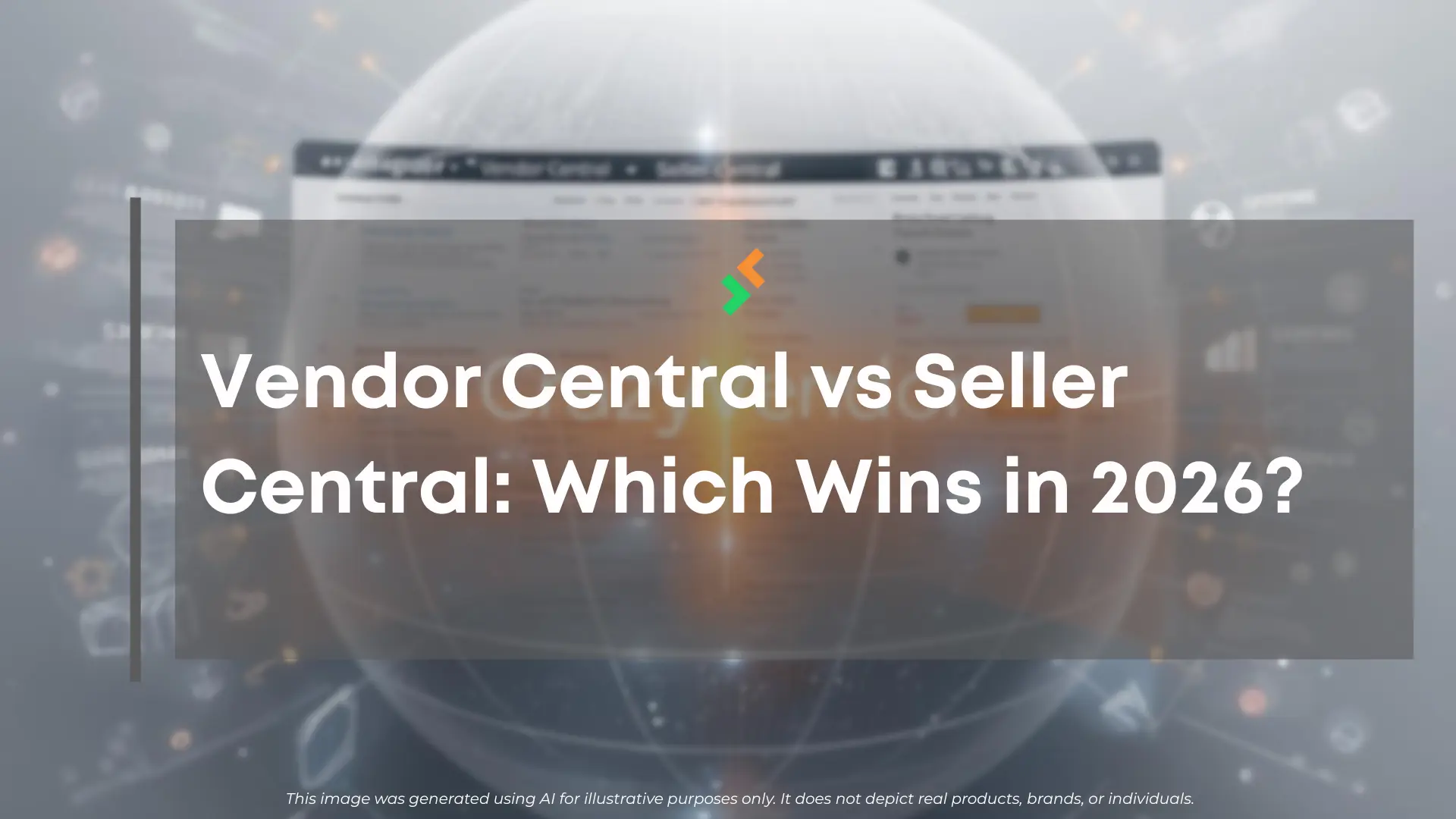
Online shopping now accounts for over 20 percent of global retail sales, transforming how businesses and consumers connect every day. Behind each successful transaction lies a web of strategies, tools, and management choices that determine growth and profitability.
With so many moving pieces involved in digital commerce, understanding the fundamentals and core models of e-commerce management can give businesses the structure they need to thrive in this competitive space.
Table of Contents
Defining E-commerce Management and Core Concepts
E-commerce management is the strategic orchestration of online business operations that transforms digital potential into tangible sales success. According to research from Regional CTE, this comprehensive discipline encompasses several critical domains, including digital marketing, financial operations, supply chain management, sales strategies, and overall e-commerce strategic planning.
At its core, e-commerce management involves coordinating multiple interconnected business functions to create a seamless online selling experience. This means integrating technologies, processes, and strategies that enable businesses to effectively market products, manage inventory, process orders, and deliver exceptional customer experiences. Learn more about multichannel strategies in our guide on mastering multichannel ecommerce, which provides deeper insights into expanding your online sales approach.
The key components of successful e-commerce management include:
- Digital Marketing: Developing targeted online promotional strategies
- Financial Operations: Managing digital transactions and revenue tracking
- Supply Chain Coordination: Ensuring efficient product sourcing and delivery
- Customer Experience Management: Creating smooth, responsive online interactions
- Data Analytics: Utilizing performance metrics to drive strategic decisions
By understanding and effectively implementing these core concepts, online sellers can transform their digital platforms from simple transactional websites into robust, growth-oriented business ecosystems that adapt and thrive in the competitive e-commerce landscape.
Key E-Commerce Management Types and Models
E-commerce management is a dynamic field with multiple transactional models that define how businesses interact and sell online. According to research from Atlas Organization, these models represent diverse relationships between different market participants, each with unique characteristics and strategic approaches.
The primary e-commerce models encompass several key types:
Here’s a comparison of the main e-commerce business models and their characteristics:
| Model | Description | Typical Participants |
|---|---|---|
| B2B | Business sells to another business | Wholesalers<br>Manufacturers<br>Distributors |
| B2C | Business sells to individual consumers | Online retailers<br>Direct brands |
| C2C | Individuals trade with each other | Online marketplaces<br>Auction sites |
| C2B | Consumers offer products or services to businesses | Freelancers<br>Content creators |
| B2G | Business sells products/services to government | Contractors<br>Procurement firms |
| G2C | Government provides services to citizens | Tax services<br>Permit applications |
- Business-to-Business (B2B): Companies selling directly to other businesses
- Business-to-Consumer (B2C): Businesses selling products to individual consumers
- Consumer-to-Consumer (C2C): Platforms enabling individual consumers to trade with each other
- Consumer-to-Business (C2B): Consumers offering services or products to businesses
Further specialized models include Business-to-Government (B2G) and Government-to-Citizen (G2C) transactions. Learn more about advanced order management strategies in our comprehensive guide, which provides deeper insights into navigating these complex e-commerce interactions.

Within the B2B model, researchers from Longdom Research highlight two additional sub-categories: Vertical and Horizontal models. Vertical B2B models focus on specific industry supply chains, while Horizontal models involve broader, cross-industry business interactions. Understanding these nuanced models helps e-commerce sellers strategically position their businesses, select appropriate sales channels, and develop targeted management approaches that align with their specific market segment and customer needs.
Essential Processes for Omnichannel Sellers
Omnichannel selling represents a sophisticated approach to e-commerce that seamlessly connects multiple sales channels to create a unified customer experience. According to research from Open Text University, this strategy integrates various platforms including online marketplaces, physical stores, mobile applications, and social media to provide customers with a consistent and interconnected shopping journey.
The core essential processes for successful omnichannel sellers include:
- Inventory Synchronization: Maintaining real-time stock levels across all sales channels
- Customer Data Management: Creating a unified customer profile across platforms
- Consistent Marketing: Delivering synchronized messaging and branding
- Seamless Customer Service: Providing uniform support experiences
- Cross-Channel Analytics: Tracking performance metrics holistically
Discover advanced CRM strategies for multichannel sellers that can help streamline these complex operational requirements. Research from Regional CTE emphasizes that successful omnichannel management hinges on a seller’s ability to create technological and strategic alignment across different sales environments.
Implementing these processes requires sophisticated technological integration, robust data management systems, and a customer-centric approach that prioritizes seamless experiences. By breaking down traditional channel barriers, omnichannel sellers can create more flexible, responsive, and customer-friendly shopping experiences that adapt to modern consumer expectations and technological capabilities.
Automation, Tools, and Integration Best Practices
E-commerce automation represents a transformative approach to streamlining business operations and enhancing overall efficiency. According to research from Open Text University, implementing sophisticated automation tools can dramatically improve operational performance across inventory management, order processing, and customer relationship management.
The key best practices for successful e-commerce tool integration include:
- Platform Compatibility: Ensuring seamless communication between different systems
- Scalable Solutions: Selecting tools that can grow with your business
- Staff Training: Developing a comprehensive understanding of automation technologies
- Continuous Performance Monitoring: Tracking and optimizing tool effectiveness
- Data Security: Implementing robust protection mechanisms
Smart customer messaging automation strategies can significantly enhance operational efficiency. Research from Regional CTE emphasizes that successful tool integration requires a strategic approach that aligns technological capabilities with specific business needs and objectives.
Ultimately, effective automation is about creating an interconnected ecosystem that reduces manual tasks, minimizes human error, and allows sellers to focus on strategic growth. By carefully selecting and integrating the right tools, e-commerce businesses can transform their operational landscape, creating more responsive, efficient, and customer-centric sales environments that adapt quickly to changing market demands.
Common Risks, Legal Issues, and Compliance
E-commerce businesses navigate a complex landscape of legal challenges and operational risks that demand proactive management and strategic planning. According to research from Open Text University, these risks encompass critical areas, including data security, consumer protection, and regulatory compliance, that can significantly impact business sustainability.
The primary legal risks and compliance challenges for e-commerce sellers include:
- Data Privacy Regulations: Protecting customer personal information
- Cybersecurity Vulnerabilities: Preventing unauthorized data access
- Consumer Protection Laws: Ensuring transparent business practices
- Intellectual Property Rights: Respecting trademark and copyright regulations
- Cross-Border Transaction Compliance: Managing international sales regulations
Businesses must implement comprehensive risk management strategies to mitigate potential legal complications. While navigating these complex requirements can seem challenging, a proactive approach and continuous education are key to maintaining legal and operational integrity.
Successful e-commerce businesses treat legal compliance as an ongoing process, not a one-time checklist. By developing robust internal protocols, investing in regular staff training, and staying informed about evolving regulatory landscapes, sellers can create resilient business models that protect both their customers and their organizational interests.
Take Control of Your E-commerce Management Today
Managing multiple sales channels and coordinating inventory, orders, and customer data can feel overwhelming. If you want to simplify digital marketing, streamline supply chain coordination, and boost your overall customer experience, tackling these challenges with the right tools is essential.
Ready to transform your e-commerce operations from complex to seamless? Use our eCommerce management software designed to automate inventory, orders, and CRM for Walmart, Amazon, Shopify, and beyond. Learn how to master order and inventory management while automating customer messaging to increase sales and reduce manual work.

Don’t wait until inefficiencies slow your growth. Explore solutions that give you back time so you can focus on strategic success at CrazyVendor.io now.
Frequently Asked Questions
What is e-commerce management?
E-commerce management is the strategic orchestration of online business operations that converts digital potential into successful sales. It encompasses various domains like digital marketing, financial operations, supply chain management, and customer experience management.
What are the primary e-commerce models?
The primary e-commerce models include Business-to-Business (B2B), Business-to-Consumer (B2C), Consumer-to-Consumer (C2C), Consumer-to-Business (C2B), Business-to-Government (B2G), and Government-to-Citizen (G2C), each representing different relationships and transaction types in the online marketplace.
How can businesses implement effective omnichannel strategies?
Businesses can implement effective omnichannel strategies by synchronizing inventory across channels, managing customer data effectively, delivering consistent marketing messages, ensuring seamless customer service, and analyzing cross-channel performance metrics.
What are the common legal issues faced by e-commerce businesses?
Common legal issues faced by e-commerce businesses include data privacy regulations, cyber security vulnerabilities, consumer protection laws, intellectual property rights, and compliance with cross-border transaction regulations. Businesses need to proactively manage these risks to ensure compliance and protect customer information.
Recommended
- Platform Overview – Crazy Vendor
- Mastering Multichannel Ecommerce: Strategies and Solutions by Crazy Vendor
You can also follow us on social media for more e-commerce insights and updates









